Factors Teaching Resources
Teach students how to use factors to solve multiplication problems with math worksheets, games and more resources ready to add to your lesson plans!
Aligned with both TEKS and the Common Core math curriculum, the printable and digital resources are designed to help students identify factor pairs and understand factorization so they can meet your state standards. You'll even find editable resources in this collection, so you can easily differentiate work for individual learners.
Whether this is your first year teaching about factors or you jut need some handy tips, we have you covered. Read on for a primer from our teacher team!
What Are Factors? A Kid-Friendly Definition
Before we can teach our students how to put factors to use, we need to explain what they are! Here's a helpful definition to use in your classroom:
Factors are the numbers that can be multiplied together to get a specific product. Factors always come in pairs — that means there are always two numbers in a set.
For example, let's say we know the product of a multiplication problem is 15. The factors of 15 would be two numbers that can be multiplicated together to equal 15.
- One factor pair of 15 is 3 and 5.
- Another factor pair is 1 and 15.
Important Factor Pair Facts
- All whole numbers have the factor of 1.
- All whole numbers have a factor pair of 1 and itself.
- Whole numbers can have more than one factor pair.
What Is Factorization? A Kid-Friendly Definition
Once students understand the concept of factors, they're ready to learn about factorization!
Factorization is the process of breaking down a number into its factors.
When we factorize a number, we are finding all the numbers that can be multiplied together to give us that number as a product. This helps us simplify a number, and it's an important strategy to employ in math class.
To do this, we divide the number by its smallest possible factors until we cannot divide it anymore.
Prime Factorization — How-to Guide Just For You!
Do you need a simple step-by-step process for prime factorization to share with your student or perhaps to send home to parents who are trying to help their children with homework?
Here you go!
- Identify the number you want to factor. For this tutorial, we'll use the example of finding the prime factorization of the number 36.
- Start by determining the smallest possible factor. In this case, we start with 2, since it is the smallest prime number.
- Divide the number you want to factorize by the smallest possible factor (in this case, divide 36 by 2). If the division results in an even number, then 2 is a factor.
- Write down the factor you found (in this case, 2), and write down the quotient of the division (in this case, 36 divided by 2 is 18).
- Repeat steps 2-4 with the quotient you just found (in this case, 18). This time, you want to find the next smallest factor (which is also 2) and divide the quotient by the factor (18 divided by 2 is 9).
- Write down the factor you found (2), and the new quotient (9).
- Repeat steps 2-4 with the new quotient (9). Find the next smallest factor (which in this case is 3) and divide the quotient by the factor (9 divided by 3 is 3).
- Write down the factor you found (3), and the new quotient (3).
- Since the quotient is now a prime number (which means it cannot be divided further), write down the final factor you found (3).
- Put all the factors together in a list. In this example, the factors of 36 are 2, 2, 3, and 3. So, we can express 36 as the product of these factors: 2 x 2 x 3 x 3.
- Plus Plan
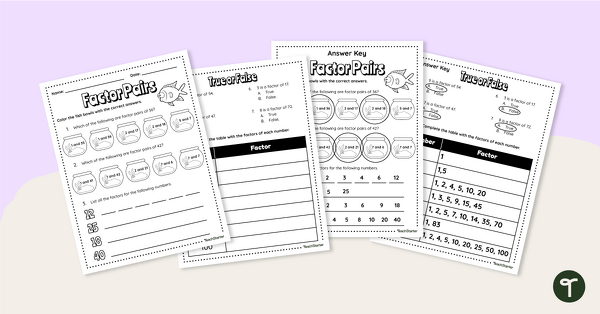
Factor Pairs – Worksheet
Find factor pairs through 100 with this math worksheet.
- Plus Plan
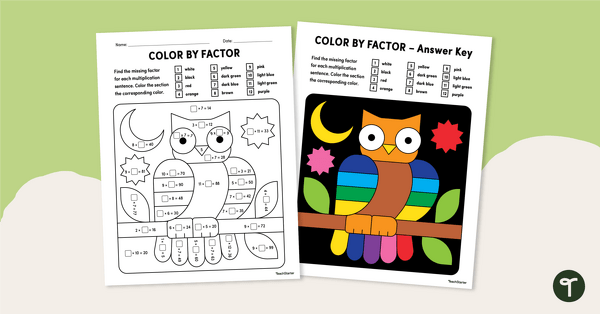
Color by Factor - Worksheet
Solve missing factor equations and color a picture according to a color by number guide.
- Plus Plan
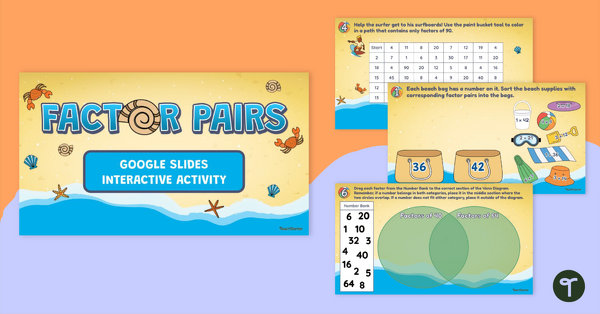
Factor Pairs – Google Slides Interactive Activity
Determine the factors of numbers less than 100 with these interactive slides.
- Plus Plan
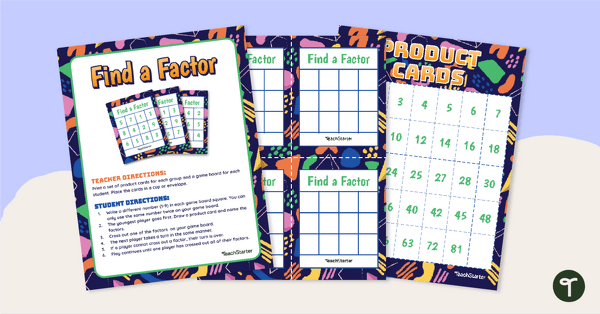
Find a Factor
Strengthen multiplication and mental math skills with this factor game.
- Plus Plan
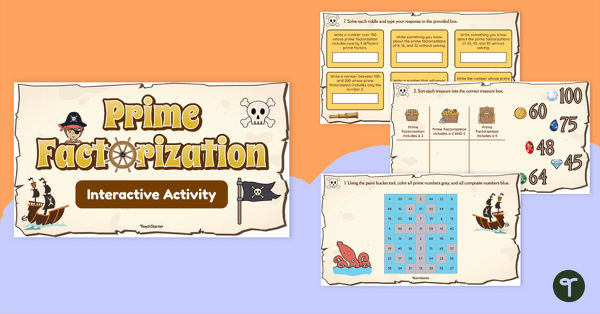
Prime Factorization – Google Slides Interactive Activity
Determine the prime factorization of a number with this set of interactive activities.
- Plus Plan
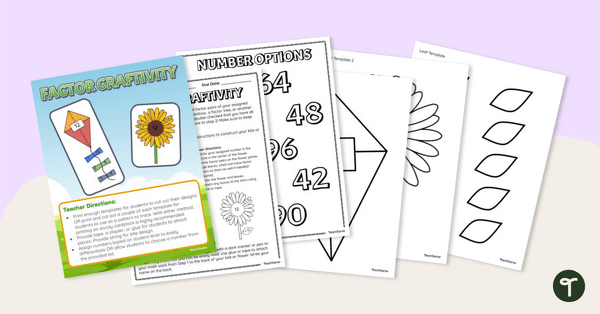
Factor Craftivity
Create a fun craft while determining factor pairs of a given number.
- Plus Plan
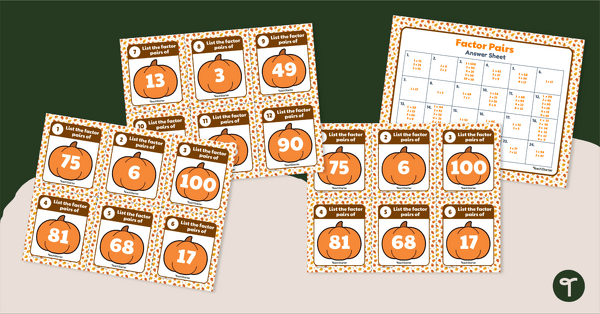
Fall Task Cards - Factor Pairs
List the factor pairs of each product card with this fall math center.
- Plus Plan
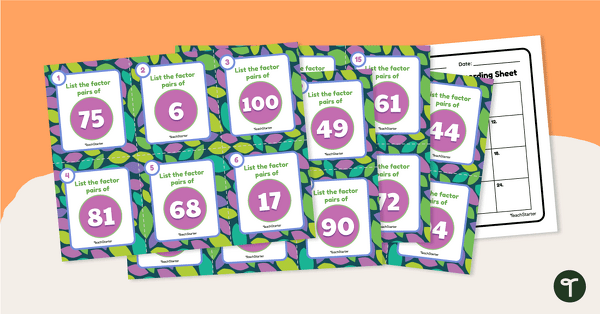
Factor Pairs – Task Cards
List the factor pairs of each product with this set of 24 task cards.